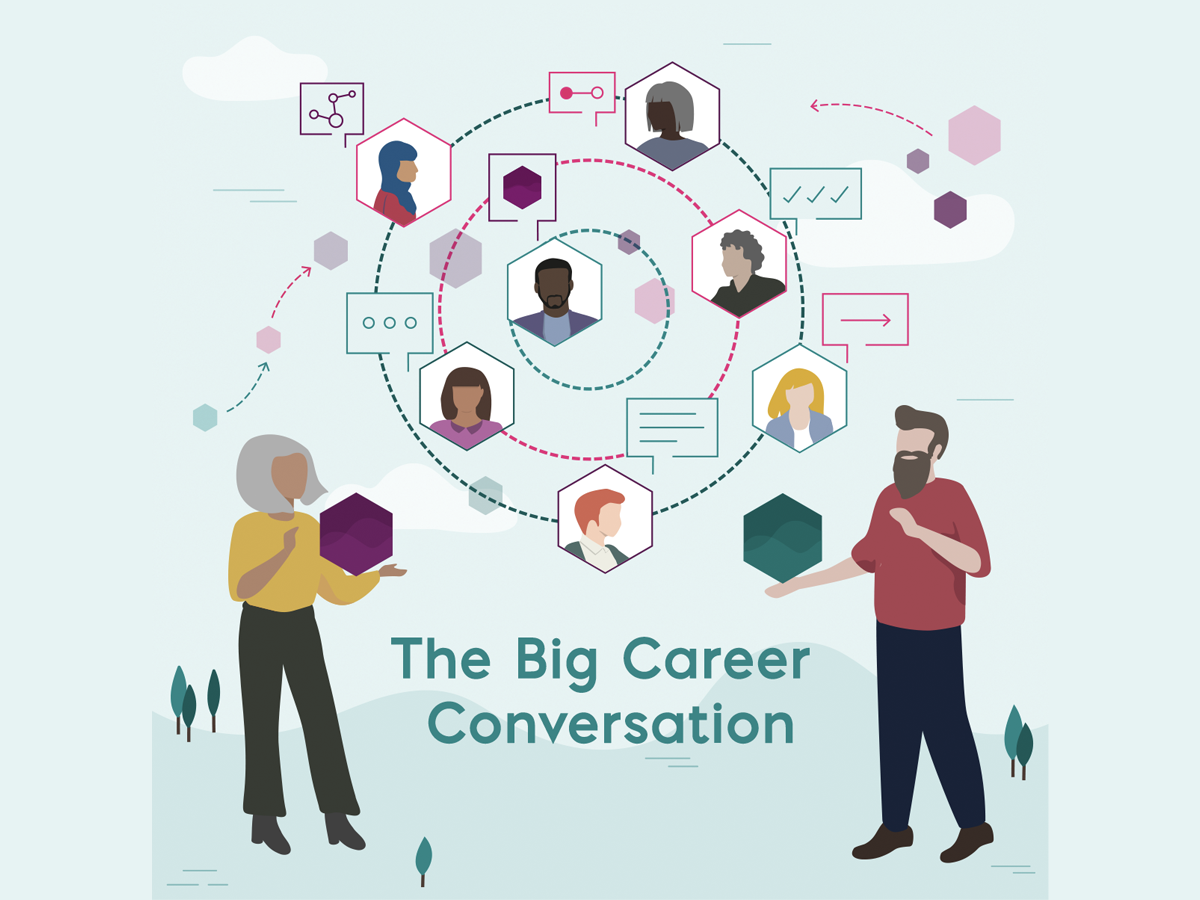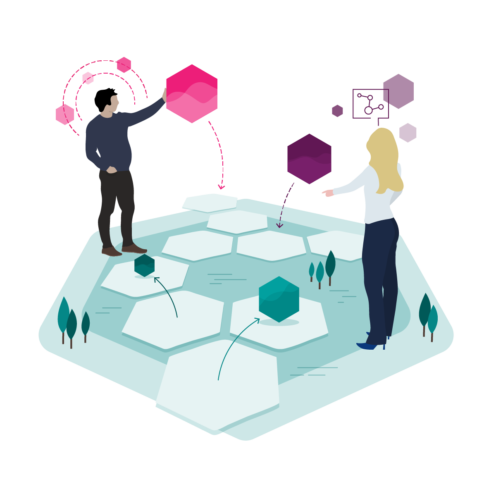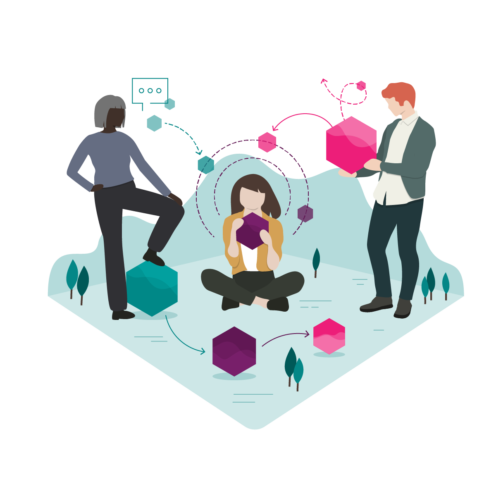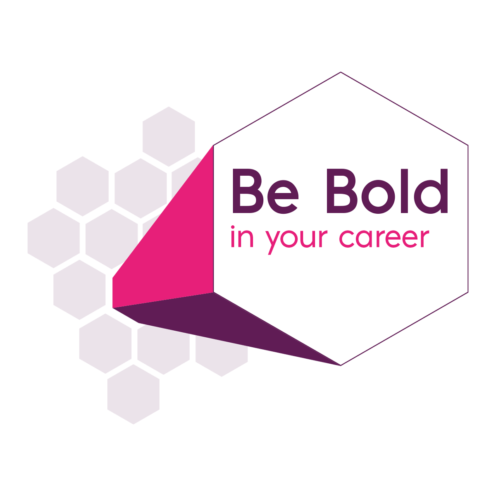The way people work has changed dramatically in the last year and shows no sign of slowing down. With so many challenges and opportunities, how are large complex organisations aligning careers with future capability needs? Are employees doing enough to protect their careers in fast-changing times? The Big Career Conversation addresses these questions through expert panels and shared HR leadership experience.
We’ll summarise immediate takeaways from our sessions here, as well as recordings. Look out for in-depth blogs that explore the issues, and the best actions to take, in the coming weeks.
Day 1: Shape the future of work and careers
We made a big start with the opening session, as our panel – Ross Smith, Microsoft, Wilson Wong, CIPD, and Marjoleine Hulshof, Investec – shared perspectives on the rapid acceleration of change at work and the challenges and opportunities for work and careers.
“Everything we thought might happen has already happened”
Ross Smith
What did we learn?
1. Hybrid working throws up problems and opportunities, particularly around the creation and promotion of social networks for those working virtually. How do we onboard and develop the careers of new starters? Some companies have developed – but not yet evaluated – online onboarding platforms. Others are creating new job archetypes, roles that can and cannot be done virtually. How do we manage the dynamic between those at home and at work, and what they are exposed to? Some report early-career employees are finding it easier to shadow and engage with clients virtually, than ‘in the room’. Others are reworking office days to ensure they include socialising of new hires, learning by experience, building networks, absorbing culture and visibility.
2. Organisational cultures have been hugely hit by the pandemic. We are replacing years of working in one way. We are learning and developing, in a period of shift.
“In a virtual world how do we communicate the sense of place?”
Marjoleine Hulshof
Globally we are in different places, most are not post-pandemic, but evolving – with no promise of a smooth future. Within this, what the workplace is for will change. Employee atttitudes towards work are disrupted, with Wilson Wong predicting a consumer’s take: “What makes it worth my while to come into the office?”
“The death of the workplace is premature – but the meaning we ascribe to the workplace will change”
Wilson Wong
3. Leadership and management roles are continuing to transform which is unsettling for many.
“None of us are experts in this time anymore. How can you be an expert? You have the illusions you can have the answers or can control things. How can you?”
Marjoleine Hulshof
Previously successful managers are having to overhaul their management style – and report feeling threatened or burnout. The dynamic of coffees, meetings, shared experience has changed. How can we equip line managers to manage in this new world of work?
4. Global mobility has an uncertain future. Talented people are less willing to relocate – the cost -balance of health risk and personal inconvenience shifts when they have seen virtual work well. Can a top team have a truly global mindset if not immersed in the culture – or does virtual working give us the opportunity to instantly create a diverse team?
5. Innovation and creativity – are there new opportunities?
“We can easily get more diverse participants, broader sets of perspectives, more creative solutions.”
Ross Smith
But there are concerns about the impact of the lack of physical interaction on creative thinking and innovation – and longer development time. Overall, there’s optimism that technology and people will adapt, with greater uptake of online courses as well as practices adapted from gaming and social media. Early-career employees were reported to seek new opportunities and experiences, which rapid change has presented.
6. Inequalities and mental health – the pandemic has shone a light on societal inequalities including working virtually. In the UK only ¼ are able to work from home, certainly not the majority, and there are huge regional and global opportunity differences. There’s a power dynamic, where the well-established have more choice not to be visible. Isolation and wellbeing were big issues.
“We are only 1 year in, we need to develop new rituals for learning, collaboration, creativity and innovation. This is a new language we are learning. The challenge is being able to sit with discomfort when we don’t have all the answers.”
Marjoleine Hulshof
Day 2: Make career development truly strategic
Despite the best of intentions, career interventions are often ad-hoc initiatives and real change can be difficult to sustain. In this session Sarah Burns, BBC and Laura Walker shared their expert views on the strategic approaches that shift the career development culture.
What did we learn?
1. The Why – what is your organisation trying to achieve? A career strategy aligns individual needs and expectations with what organisations need, as the psychological contract rapidly evolves. It should connect with several big business priorities.
2. Strategy vs Tactics – is your approach truly strategic? Tactics plus a careers intention statement can cause damage when the reality for employees doesn’t match the rhetoric. Culture, mindset and practice need to match up.
3. Choreographed conversations create change – you get shifts when views are shared and aligned throughout the business. Exploring language such as ‘hoarding’, ‘poaching’ and ‘career paths’ helps.
“We can’t shift culture, particularly in mature organisations, just by wanting to!”
Laura Walker
Use data to spark new conversations about career and what can be achieved.
“If only 5% of employees move between our businesses, but 15% leave – are we ok about that?”
Laura Walker
4. Look out for HR silos – all HR process are impacted by career: reward, talent management, resourcing…. Are they in harmony? Are they recognised for achieving the same – or conflicting – goals?
“Each specialist HR area has separate plans, passions and convictions – they are clear what they need to achieve. But making the total eco-system work is more valuable to the business.”
Sarah Burns
5. Careers are unravelling at increasing speed. Structures are evolving, linear paths go, and your future job disappears.
“We need long sprints, lateral moves, stretch, to be passionate and also relevant”
Sarah Burns
Organisations are shifting the dial by connecting with individual’s personal intent about what they want from their careers. Alongside this, the last year has blown away many entrenched views about what is possible in jobs and organisations.
6. Reward and recognise leaders who grow talent, offer opportunities and develop careers.
“For many organisations, the majority of talent for the next 15-20 years is already in the business. What’s your upskilling and reskilling agenda?”
Laura Walker
Day 3: Facilitate internal mobility – what works?
Faced with highly competitive markets for sought-after skills, many organisations are promoting lateral career development and seeking seamless internal talent mobility. In this fast-paced session, our experts Diane Tomlinson and Patrick Whelan, Paddle HR explored mobility strategy, culture change, career journeys, skill availability and the role of AI.
What did we learn?
1. Strategic drivers – moving people round makes commercial sense and gives employees opportunities, skills and fulfilling careers. Organisations are looking to solve current and future skills gaps and to shift the dial on diversity and inclusion, attrition and performance. At the outset, companies need to use data and insight to be crystal clear on their ‘Build not Buy’ philosophy. Then culture change, together with the best platform for mobility, will make this work.
2. Culture change – many talked of a “protectionist mindset”. Technology can unlock culture change by actively bringing managers into the mobility strategy. Visibility of opportunity and skill enables them to see: What are the career paths for my team? What talent is out there – what’s in it for me? Other nudges included incentivising managers as ‘talent finders’ who grow, release and take a risk on talent, and individuals who make lateral moves. Tech enables employees to see breadth in the opportunities available to them and plan development moves towards those – impacting their mindset around personal agency.
“Beliefs drive actions and actions influence beliefs”
Diane Tomlinson
3. A long way from seamless – globally, and across sectors, companies reported issues with access to internal opportunities. Many said it was easier to find and apply for an external than internal post – perhaps reflecting superior tech and investment in external hires. Companies with skills shortages reported employees leaving due to failures in the internal opportunity market.
“2 talented people resigned to leave for jobs in competing companies. Asked why they hadn’t applied internally, both said they’d made approaches internally and not heard back”
4. Informal mobility – the internal gig economy, where ‘slices’ of the team’s ‘skills pie’ were used across the organisation was popular – equally when other skill ‘slices’ were brought in! One company described an 80:20 Stretch where 20% of an employee’s time is spent in a different part of the business. The virtual working explosion and hastily-assembled covid-response teams of the pandemic have revealed myriad informal mobility opportunities. Many organisations are taking learning on this.
“Do we have the right skills in the right place at the right time?”
Pat Whelan
5. Challenges – should there be a minimum time in post in a ‘Build not Buy’ culture? It’s also important not to lose the positives of external hiring, like new insight and diversity. Measuring the success of an internal mobility strategy included questions such as ‘What are the hidden costs of external vs internal hires? Can we give our people the fulfilling career they are looking for? Do we have the skills we need to take a competitive leap forward?
“Internal hires were found to perform better in the first 2 years due to an advantage from understanding mission, vision and values, product mix and back channels”
Pat Whelan
Day 4: How to instil career resilience
How can we ignite a passion in people to futureproof their careers, as disruption to traditional work patterns spreads across economic sectors? In this in-depth session Ishha Nagrath, BCG and Valerie Rowles, Rosemary McLean and David North explored new methods for co-creating career resilience.
What did we learn?
1. Challenge temporal myopia – we need new ways to grab attention, to improve long-term career success by acting today. It needs to be emotionally-resonant – employees cannot afford to blank out the message because the personal implications to them are serious.
‘Learning is the new pension, it’s how you create your future value every day’ Heather E McGowan, The Adaptation Advantage
2. Shared responsibility – the employee cannot manage their career within the organisation without the active support of the organisation. Building employability and career resilience is a systemic challenge.
3. What helps? Having insights about the future of work, the skills that are needed, and regular and genuine encouragement to talk about career development. A clear explanation of what career resilience skills look like. Understanding internal moves and real stories of diverse career paths. The psychological safety to experiment – both for employees and their managers.
4. Absolute understanding of employee needs is the start. Multiple ideas for employee listening included using design thinking to create employee personas based on career needs, and interviews with employee segments to dig beneath career frustrations.
“Is it really about a lack of information or opportunities, or is it different frustrations the employee is feeling?
Ishha Nagrath
Often the employee knows the need and route for change, it does not need to be imposed.
“Employees do have the answers but you have to ask the questions”
Valerie Rowles
One organisation had targets for the career experience that their employees should be enjoying at different stages of their careers. They explored whether the reality matched the promise.
5. Design thinking enabled organisations to understand and define the career needs of the organisation and its employees, and test a variety of different types of career support.
“The problem can be solved – we just haven’t gone to the customer (the employee) and asked them. Design thinking keeps the end user in the centre of the solution”
Ishha Nagrath
6. A diversity of options enables a solution for all needs. The fast-response teams of the pandemic have opened up lateral moves for some companies. Others have sprint groups on the internal gig economy, hybrid working and the future of work. Understanding the diverse and evolving needs of employees creates inclusive solutions that work better than a one-size-fits-all approach.
“More than one version of career development is acceptable in an organisation”
Valerie Rowles





